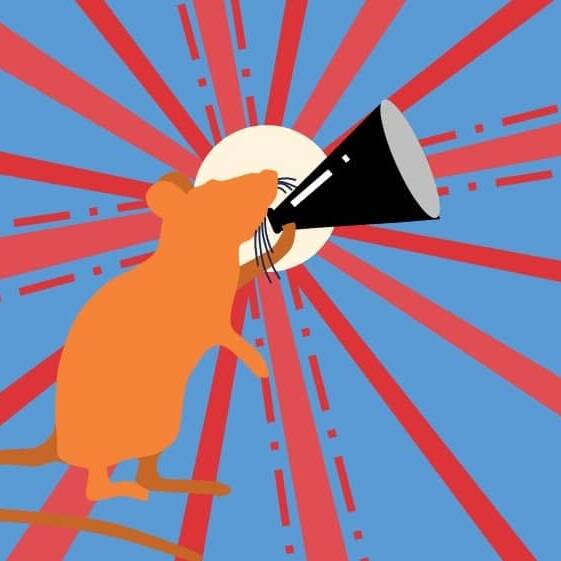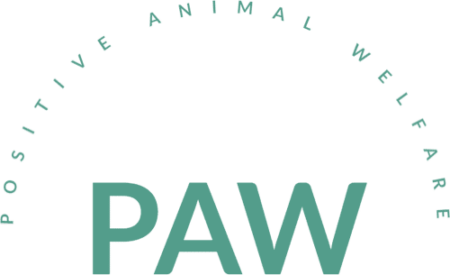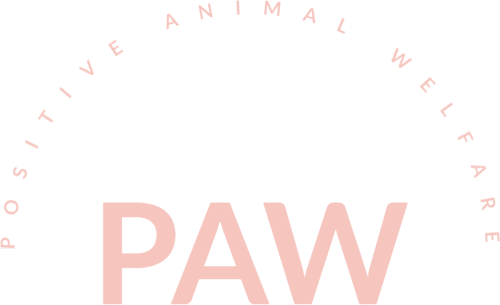WorkshopUSVs for the People and the Rodents
The key aim of this workshop was to promote the recording of USV as a cheap, non-invasive and easy-to-use tool to investigate affective states (in rats) and other social processes (in rodents). We addressed questions such as why we should be interested in USV and how we can record USV with different levels of equipment, using examples from researchers using these techniques in their work. We also covered different approaches to analysing USV. The presentations can be viewed below and a useful reference list is provided here.

Introduction
Dr Vincent Bombail (SRUC) introduces this online workshop.
The importance of USV in early social development
Dr Theresa Kisko (KU Leuven)
Studying maternal pup interactions in rats
Dr Caitlin Wyrwoll (The University of Western Australia)
Rats chirp with their mouths full
Dr Nicolas Darcel (AgroParisTech)
Eavesdropping, USV monitoring in the home environment of rat models of nurodevelopmental disorders
Dr Raven Hickson (University of Edinburgh)
Affective bias test & recording of USV in rats
Dr Justyna Hinchcliffe (University of Bristol)
Acoustic communications in mice: a window on animal welfare
Dr Sylvie Granon (Universite Paris Saclay)
Exploring social communication in mice – applications in models of conditions affecting social communication
Dr Elodie Ey (CNRS)
Mice ultrasonic vocalizations during positive emotional states
Dr Catalina Gonzalez (SRUC)
USV recording on a shoestring
Dr Vincent Bombail (SRUC)
References:
Bombail, V., Jerôme, N., Lam, H., Muszlak, S., Meddle, S. L., Lawrence, A. B., & Nielsen, B. L. (2019). Odour conditioning of positive affective states: rats can learn to associate an odour with being tickled. PLoS One, 14(6), e0212829.
Bombail, V., Brown, S. M., Hammond, T. J., Meddle, S. L., Nielsen, B. L., Tivey, E. K., & Lawrence, A. B. (2021). Crying with laughter: Adapting the tickling protocol to address individual differences among rats in their response to playful handling. Frontiers in Veterinary Science, 8, 677872.
Brudzynski, S. M., & Granon, S. (2022). Principles of Recording Rodent Ultrasonic Vocalizations. In Psychiatric Vulnerability, Mood, and Anxiety Disorders: Tests and Models in Mice and Rats (pp. 329-352). New York, NY: Springer US.
Burgdorf, J., Panksepp, J., & Moskal, J. R. (2011). Frequency-modulated 50 kHz ultrasonic vocalizations: a tool for uncovering the molecular substrates of positive affect. Neuroscience & Biobehavioral Reviews, 35(9), 1831-1836.
Burke, C. J., Pellis, S. M., & Achterberg, E. J. M. (2022). Who’s laughing? Play, tickling and ultrasonic vocalizations in rats. Philosophical Transactions of the Royal Society B, 377(1863), 20210184.
Chabout, J., Jones-Macopson, J., & Jarvis, E. D. (2017). Eliciting and analyzing male mouse ultrasonic vocalization (USV) songs. JoVE (Journal of Visualized Experiments), (123), e54137.
Chabout, J., Serreau, P., Ey, E., Bellier, L., Aubin, T., Bourgeron, T., & Granon, S. (2012). Adult male mice emit context-specific ultrasonic vocalizations that are modulated by prior isolation or group rearing environment. PloS one, 7(1), e29401.
Champeil-Potokar, G., Kreichati, L., Rampin, O., Denis, I., Darcel, N., & Bombail, V. (2023). Rats chirp with their mouth full: During an experimental meal, adult male Wistar rats emitted flat ultrasonic vocalisations upon feeding. Frontiers in Behavioral Neuroscience, 17, 1089631.
de Chaumont, F., Lemière, N., Coqueran, S., Bourgeron, T., & Ey, E. (2021). LMT USV toolbox, a novel methodological approach to place mouse ultrasonic vocalizations in their behavioral contexts—a study in female and male C57BL/6J mice and in Shank3 mutant females. Frontiers in Behavioral Neuroscience, 15, 735920.
Ey, E., de Chaumont, F., & Bourgeron, T. (2020). Spontaneous social communication in laboratory mice-placing ultrasonic vocalizations in their behavioral context. bioRxiv, 2020-07.
Faure, A., Pittaras, E., Nosjean, A., Chabout, J., Cressant, A., & Granon, S. (2017). Social behaviors and acoustic vocalizations in different strains of mice. Behavioural brain research, 320, 383-390.
Granon, S., Faure, A., Chauveau, F., Cressant, A., & Ey, E. (2018). Why should my mouse call me? Acoustic communication in mouse models of social disorders: ultrasonic vocalizations as an index of emotional and motivational states. In Handbook of Behavioral Neuroscience (Vol. 25, pp. 423-431). Elsevier.
Hinchcliffe, J. K., Jackson, M. G., & Robinson, E. S. (2022). The use of ball pits and playpens in laboratory Lister Hooded male rats induces ultrasonic vocalisations indicating a more positive affective state and can reduce the welfare impacts of aversive procedures. Laboratory Animals, 56(4), 370-379.
Hinchcliffe, J. K., Mendl, M., & Robinson, E. S. (2020). Rat 50 kHz calls reflect graded tickling-induced positive emotion. Current Biology, 30(18), R1034-R1035.
Karwicka, W., Wiatrowska, M., Kondrakiewicz, K., Knapska, E., Kursa, M.B. & Hamed, A. (2021). Relaying Aversive Ultrasonic Alarm Calls Depends on Previous Experience. Empathy, Social Buffering, or Panic? Brain Sciences, 11(6), 759
Kisko, T. M., Himmler, B. T., Himmler, S. M., Euston, D. R., & Pellis, S. M. (2015). Are 50-kHz calls used as play signals in the playful interactions of rats? II. Evidence from the effects of devocalization. Behavioural processes, 111, 25-33.
Kisko, T. M., Schwarting, R. K., & Wöhr, M. (2021). Sex differences in the acoustic features of social play‐induced 50‐kHz ultrasonic vocalizations: A detailed spectrographic analysis in wild‐type Sprague–Dawley and Cacna1c haploinsufficient rats. Developmental Psychobiology, 63(2), 262-276.
Kisko, T. M., Wöhr, M., Pellis, V. C., & Pellis, S. M. (2017). From play to aggression: high-frequency 50-kHz ultrasonic vocalizations as play and appeasement signals in rats. Social behavior from rodents to humans: Neural foundations and clinical implications, 91-108.
Knutson, B., Burgdorf, J., & Panksepp, J. (2002). Ultrasonic vocalizations as indices of affective states in rats. Psychological bulletin, 128(6), 961.
Lefebvre, E., Granon, S., & Chauveau, F. (2020). Social context increases ultrasonic vocalizations during restraint in adult mice. Animal Cognition, 23(2), 351-359.
Olszyński, K.H., Polowy, R., Małż, M., Boguszewski, P.M. & Filipkowski, R.K. (2020). Playback of Alarm and Appetitive Calls Differentially Impacts Vocal, Heart-Rate, and Motor Response in Rats. iScience, 23(10), 101577.
Portfors, C. V. (2007). Types and functions of ultrasonic vocalizations in laboratory rats and mice. Journal of the American Association for Laboratory Animal Science, 46(1), 28-34.
Premoli, M., Pietropaolo, S., Wöhr, M., Simola, N. & Bonini, S.A. (2023). Mouse and rat ultrasonic vocalizations in neuroscience and neuropharmacology: State of the art and future applications. European Journal of Neuroscience, 57(12), 2062-2096
Schwarting, R.K.W. (2023). Behavioral analysis in laboratory rats: Challenges and usefulness of 50-kHz ultrasonic vocalizations. Neuroscience and Biobehavioral Reviews, 152, 105260
Simola, N., & Granon, S. (2019). Ultrasonic vocalizations as a tool in studying emotional states in rodent models of social behavior and brain disease. Neuropharmacology, 159, 107420.
Smith, B. J., Bruner, K. E., & Kendall, L. V. (2019). Female-and intruder-induced ultrasonic vocalizations in C57BL/6J mice as proxy indicators for animal wellbeing. Comparative Medicine, 69(5), 374-383.
Till, S. M., Hickson, R. D., & Kind, P. C. (2022). Cross-species considerations in models of neurodevelopmental disorders. Trends in Neurosciences, 45(3), 171-172.
Tivey, E. K., Martin, J. E., Brown, S. M., Bombail, V., Lawrence, A. B., & Meddle, S. L. (2022). Sex differences in 50 kHz call subtypes emitted during tickling-induced playful behaviour in rats. Scientific Reports, 12(1), 15323.
Wardak A.D., Olszyński, K.H., Polowy, R., Matysiak, J. & Filipkowski R.K. (2024). Rats that learn to vocalize for food reward emit longer and louder appetitive calls and fewer short aversive calls, PLoS One, 19(2), e0297
Wöhr, M. (2022). Measuring mania-like elevated mood through amphetamine-induced 50-kHz ultrasonic vocalizations in rats. British Journal of Pharmacology, 179(17), 4201-4219
Yates, N. J., Tesic, D., Feindel, K. W., Smith, J. T., Clarke, M. W., Wale, C., Crew, R. C., Wharfe, M. D., Whiteshouse, A. J. O. & Wyrwoll, C. S. (2018). Vitamin D is crucial for maternal care and offspring social behaviour in rats. Journal of Endocrinology, 237(2), 73-85.




